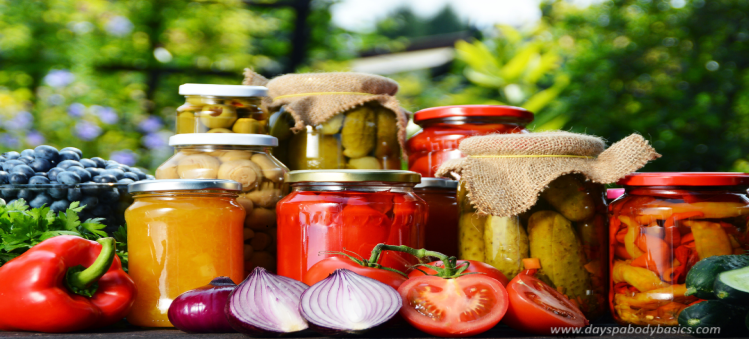
Smart Food Market by Type (Functional Food, Encapsulated Food, Genetically Modified Food, and Others), and by Distribution Channel (Supermarket, Convenience Store, Online Stores, and Others)- Global Opportunity Analysis and Industry Forecast 2024-2030
Smart food Market Overview
The Smart Food Market size was valued at USD 557.7 billion in 2023 and is predicted to reach USD 1203.6 billion by 2030 with a CAGR of 11.6% from 2024-2030. Smart food market refers to the food industry that encompasses on the production, distribution, and sales of innovative food products and solutions that leverage advanced technologies. These technologies include internet of things (IoT), artificial intelligence (AI), and data analytics to enhance food quality, safety, sustainability, and nutritional value. This market includes smart packaging, precision farming, functional foods, and personalized nutrition solutions aimed at improving the efficiency and effectiveness of food production and supply chains, ultimately catering to the evolving need of the consumers and businesses.
Market Dynamics and Trends
The increasing prevalence of chronic diseases such as obesity, diabetes, and heart disease is driving in the smart food market growth as consumers seek better ways to manage their health through diet. As per World Health Organization report, noncommunicable diseases (NCDs) are responsible for 41 million deaths annually, accounting for 74% of all global fatalities. This growing demand for health-conscious food options is propelling the industry forward, as innovative products offer tailored solutions to help consumers effectively manage and prevent chronic diseases through their dietary choices.
Moreover, rising adoption of advanced technologies such as IoT, AI and data analytics by various organizations in the smart food sector are significantly driving market growth. These initiatives are aimed at transforming food production, processing, and distribution enhancing efficiency, accuracy, and sustainability in food production systems. For example, the University of Guelph launched an AI initiative designed to benefit agri-food production and sustainability practices. This initiative focused on using artificial intelligence to enhance crop management, improve yield predictions, and develop more sustainable farming practices.
Through, leveraging AI for data analysis and decision-making, the program aimed to increase efficiency and reduce environmental impact in agriculture. This increased focus on innovation is accelerating the adoption of smart food solutions, as businesses and consumers alike seek to benefit from improved crop management, better yield predictions, and more sustainable practices. However, smart food products come at a premium compared to traditional food options, potentially limiting accessibility for low-income consumers, thus restraining the growth of the market.
On the contrary, the introduction of 3D food printing technology in smart food is expected to create ample future opportunities for the market. This technology allows for the customization of meals with precise control over ingredients, textures, and shapes, catering to individual dietary needs and preferences.
Market Segmentation and Scope of Study
The global smart food market report is segmented on the basis of type, distribution channel and region. Based on type, the market is classified into functional food, encapsulated food, genetically modified food, and others. Based on the distribution channel, the market is segmented into supermarket, convenience store, online stores, and others. Regional breakdown and analysis of each of the aforesaid classifications include regions comprising of North America, Europe, Asia-Pacific, and RoW.
Geographical Analysis
Asia Pacific dominates the global smart food market share and is potently expected to remain dominant in the market throughout the forecast period. This is attributed to the rising urbanization in countries such as China, India, and Japan significantly boosting the demand for convenient and nutritious food options. As per World Bank data, China’s urban population grew from 61% of the total population in 2020 to 65% in 2023 of the total population. As more people move to cities, their busy lifestyles boost need for products that are both easy to prepare and beneficial for health. Urban population are increasingly seeking food that fits into their fast-paced routines while providing essential nutrients, driving the growth of products that meet these needs.
Moreover, the rapid expansion of the e-commerce industry in the region is significantly driving the smart food market. As online shopping becomes more prevalent, consumers have easier access to a wide variety of products that offer health benefits and convenience. According to the World Economic Forum as of February 2022, Asia accounts for nearly 60% of the world’s online retail sales.
Asia-Pacific e-commerce industry is expected to nearly double by 2025, reaching USD 2 trillion. E-commerce platforms enable quick and efficient delivery of these innovative food options, catering to the increasing of smart food market demand from health-conscious and busy urban populations. This surge in online retail is making it easier for food companies to reach a broader customer base, thereby boosting market growth in the region.
On the other hand, North America shows substantial growth in the global market owing to the stable economic conditions and high disposable income in countries such as the U.S. and Canada allowing consumers to invest more in health and wellness products. According to the St. Louis Federal Reserve Bank, the real personal income in the U.S. grew from USD 16,042 per person in April 2022 to USD 16,921 per person in April 2024.
This increase in disposable income enables consumers to allocate significant portion of their money towards maintaining their health and lifestyle. Consequently, there is a higher demand for food products that offer tailored nutrition, convenience, and health benefits. This willingness to invest in personal well-being is driving the growth of the market in the region.
Moreover, the rising government initiatives and industry support for health and wellness innovations, including initiatives, grants, and subsidies for developing smart food technologies, are boosting the market. For instance, in July 2024, Delaware state government collaborated with R4 Technologies and launched an innovative food project aimed at addressing food insecurity and food waste.
This initiative focused on leveraging advanced technologies to improve food distribution and reduce waste. By utilizing smart technologies and data analytics, the project sought to enhance food security and optimize food supply chains. These initiatives through partnerships and collaborative efforts enhances research capabilities and boosts the introduction of advanced food solutions, thus fuelling the smart food market growth.
Competitive Landscape
Various key players operating in the smart food industry include Archer-Daniels-Midland Company, Arla Foods, Aveka, Inc., Balchem Corporation, BASF SE, Cargill, Inc., Firmenich SA, Ingredion Incorporated, International Flavors & Fragrances Inc., and Kellogg Company. These companies are adopting various strategies such as business expansion, product launch, acquisition, and partnership to maintain their dominance in the global market.
For instance, in June 2023, ADM opened a state-of-the-art production facility in Spain with an investment of over USD 30 million to meet the growing demand for probiotics. The new facility aimed to enhance ADM's ability to supply advanced probiotic solutions and address rising consumer demand for functional foods that support digestive and overall health.
Also, in June 2022, Cargill, announced a joint venture with Delacon to create a leading plant-based phytogenic feed additives business for healthier animal nutrition. The acquisition will bring deep feed additives expertise, global presence, and more wholesome food production along with sustainable customer solutions focused on animal health, feed efficiency, and performance.
Moreover, in May 2022, BASF acquired Horta S.r.l., for the development of highly innovative agronomic Decision Support Systems (DSS) for crops such as grapes, tomatoes, cereals and olives. Through this acquisition Horta will continue to operate on the market with the current organization and management and its well-established brand in the agri-food market to ensure business continuity.
Moreover, in September 2021, Archer-Daniels-Midland Co launched a new flavour production facility in China to meet growing demand for beverages and healthy foods. The new facility marks a further expansion by the global grains’ trader in the nutrition segment.
Furthermore, in July 2021, Balchem Corporation partnered with the best-selling author of the children’s book series Ninja Life Hacks to secure strategic partners for branded food products that promote a healthy emotional and physical relationship with foods. The products will range from healthy foods and dietary supplements for cognitive health, to ice creams, and will be developed for specific partners and retailers.
Key Benefits
-
The report provides quantitative analysis and estimations of the smart food market from 2024 to 2030, which assists in identifying the prevailing market opportunities.
-
The study comprises a deep-dive analysis current and future of the smart food market trends to depict prevalent investment pockets in the industry.
-
Information related to key drivers, restraints, and opportunities and their impact on the market is provided in the report.
-
Competitive analysis of the players, along with their smart food market share is provided in the report.
-
SWOT analysis and Porters Five Forces model is elaborated in the study.
-
Value chain analysis in the market study provides a clear picture of roles of stakeholders.
Smart food Market Key Segments
By Type
-
Functional Food
-
Encapsulated Food
-
Genetically Modified Food
-
Others
By Distribution Channel
-
Supermarket
-
Convenience Store
-
Online Stores
-
Others
By Region
-
North America
-
U.S
-
Canada
-
Mexico
-
-
Europe
-
UK
-
Germany
-
France
-
Italy
-
Spain
-
Denmark
-
Netherlands
-
Finland
-
Sweden
-
Norway
-
Russia
-
Rest of Europe
-
-
Asia-Pacific
-
China
-
Japan
-
India
-
South Korea
-
Australia
-
Indonesia
-
Singapore
-
Taiwan
-
Thailand
-
Rest of Asia-Pacific
-
-
Rest of the World (RoW)
-
Latin America
-
Middle East
-
Africa
-
REPORT SCOPE AND SEGMENTATION:
|
Parameters |
Details |
|
Market Size in 2023 |
USD 557.7 Billion |
|
Revenue Forecast in 2030 |
USD 1203.6 Billion |
|
Revenue Growth Rate |
CAGR of 11.6% from 2024 to 2030 |
|
Analysis Period |
2023–2030 |
|
Base Year Considered |
2023 |
|
Forecast Period |
2024–2030 |
|
Market Size Estimation |
Billion (USD) |
|
Growth Factors |
|
|
Countries Covered |
28 |
|
Companies Profiled |
10 |
|
Market Share |
Available for 10 companies |
|
Customization Scope |
Free customization (equivalent up to 80 working hours of analysts) after purchase. Addition or alteration to country, regional, and segment scope. |
|
Pricing and Purchase Options |
Avail customized purchase options to meet your exact research needs. |
Key Players
-
Archer-Daniels-Midland Company
-
Arla Foods
-
Aveka, Inc.
-
Balchem Corporation
-
BASF SE
-
Cargill, Inc.
-
Firmenich SA
-
Ingredion Incorporated
-
International Flavors & Fragrances Inc.
-
Kellogg Company




 Speak to Our Analyst
Speak to Our Analyst


































